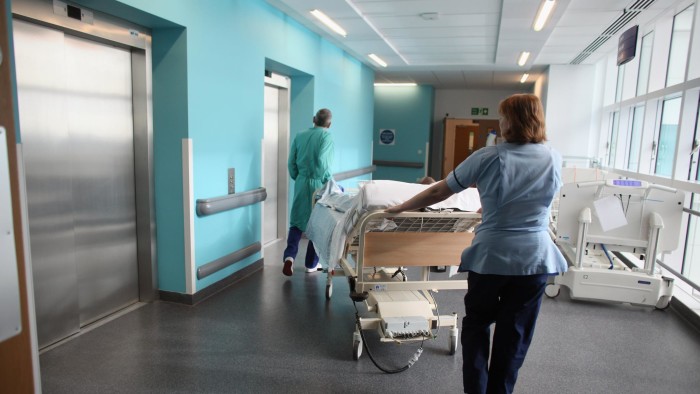Performance management the key to NHS, not devolution

Roula Khalaf, Editor of the FT, selects her favourite stories in this weekly newsletter.
The English and Scottish NHS systems both offer universal, free healthcare and deal with broadly similar populations. Yet the claim that the character of Scotland’s NHS will be in jeopardy without the supposed greater freedoms of independence has boosted the Yes campaign as few other issues have done.
Beyond the claim and counter-claim, how has the NHS performed under the stewardship of Alex Salmond and the Scottish National party, and have the distinct features of the Scottish system led to a stronger performance?
The debate touches on some of the most sensitive and polarising issues of health policy, not least the efficacy, or otherwise, of competition and patient choice to improve performance.
Health policy has been devolved since the creation of a separate Scottish parliament in 1999. Holyrood has flexed its muscles by opting to reject much of the architecture created to underpin competition between organisations in England.
Scotland has no split between the purchasers and the providers of care, for example, and has largely resisted involving private companies. It has been able to offer free personal care to elderly people and free prescriptions due, some believe, to its more generous per-capita funding under the Barnett formula.
However, the latest evidence suggests the two systems are performing at roughly the same level, almost regardless of their structural and policy differences.
A detailed comparison of the four UK health systems, published by the Nuffield Trust in April, showed that differences in performance between England and Scotland had narrowed since an earlier study showing England to be notably stronger. The two countries now have similar performance on measures such as hospital waiting times.
Yet what had made the difference, according to Nuffield, was not so much the distinctive features of devolution than tougher performance management, including Scotland’s version of waiting time targets. Experts say there is only sparse evidence that the provision of free nursing care, for example, has made a difference in reducing hospital admissions.
One SNP claim is that only independence will protect spending on the NHS in Scotland, which will otherwise suffer from deepening Westminster-driven austerity after the 2015 general election.
Spending on healthcare in Scotland has indeed been higher than in the three other constituent parts of the UK. The most recent data show that, adjusting for inflation, Scotland spent £2,151 per head on health in 2012-13 – £206 more than England.
However, the Institute for Fiscal Studies has found that between 2009-10 and 2015-16, the Scottish government opted to protect funding for its NHS slightly less than was the case in England, and that spending north of the border had in fact fallen by 1 per cent.
Paul Johnson, IFS director, said it seemed that “historically, at least, Scottish governments in Holyrood have placed less priority on funding the NHS in Scotland and more on funding other services, than governments in Westminster have for England”.
Prof Gwyn Bevan, professor of policy analysis at the London School of Economics, who worked on the Nuffield report, believes it is quite possible that in future Scotland will outperform its English neighbour. If it does, it will show the value of its smaller scale and organisational stability, he argues.
“The English NHS has suffered from several different structural upheavals in the past 10 years but the Scottish system has not changed at all in that period. Constant reorganisation is a distinctively English disease – and they have been immune from it north of the border,” he says.
Comments